Bwindi National Park is banned
Unesco's Scientific, Educational and Cultural Organization has recognized Bwindi's national park as Uganda's World Natural Heritage in 1994.
Bwindi National Park is located along the border with the Democratic Republic of Congo, bordering Virunga National Park. The total area of the national park is about 331 km2 including forests, mountains and lowland forest areas. To get to this forbidden forest area, there is only one way to go by road. In 1994, the national park was banned from Unesco's World Heritage list because of the richness and diversity of the most African ecosystem.
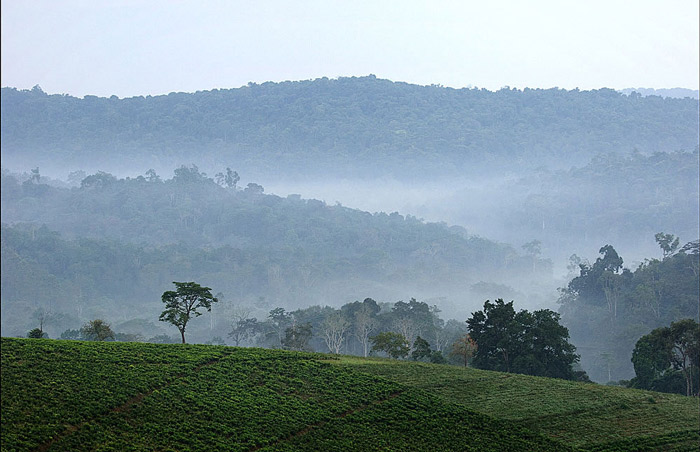
Bwindi banned national park has an outstanding feature of a national park, which is a habitat and habitat for more than 100 mammals, 348 bird species, 220 butterfly species, 27 amphibian species and several species named in the list of rare animals . Flora in Bwindi forbidden forest is also extremely rich with a list of more than 1000 species of flowering plants including 163 species of plants, 104 species of ferns. The northern area is a low forest area with many precious timber species, of which 2 species have been internationally listed as potential endangered species. In the list of more than 100 species of animals residing in the garden, there are rare and precious species such as chimpanzees, Colobus monkeys, mountain gorillas, hornbills, Turaco birds. remaining in the world.
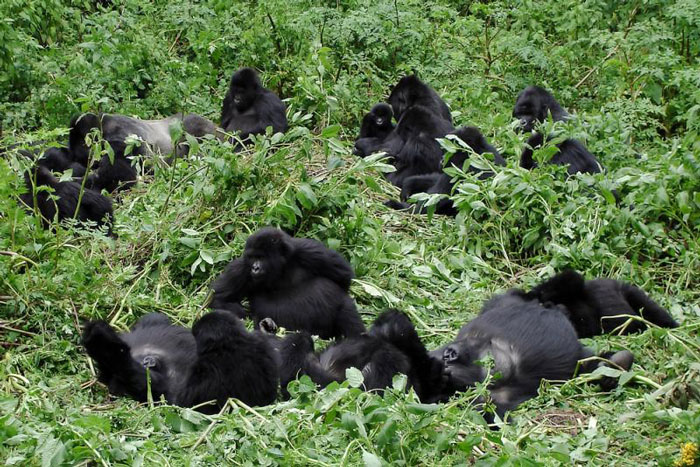
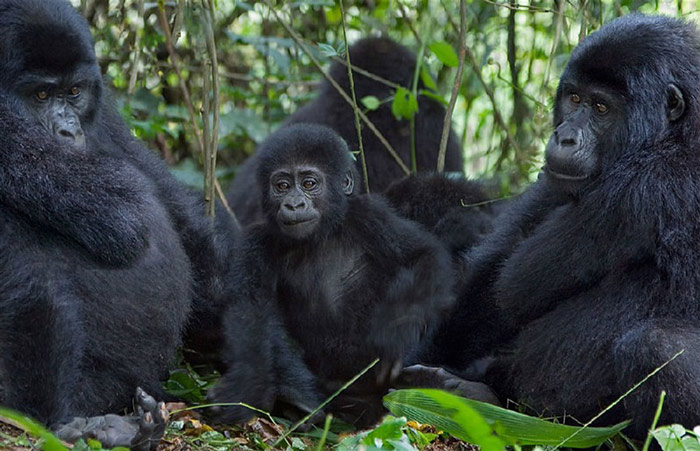
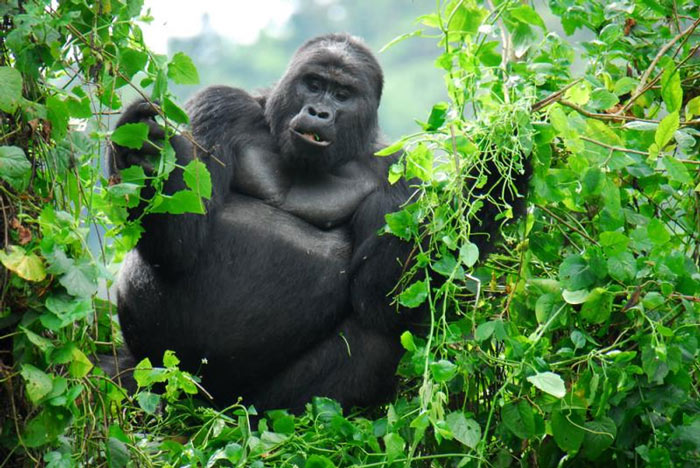
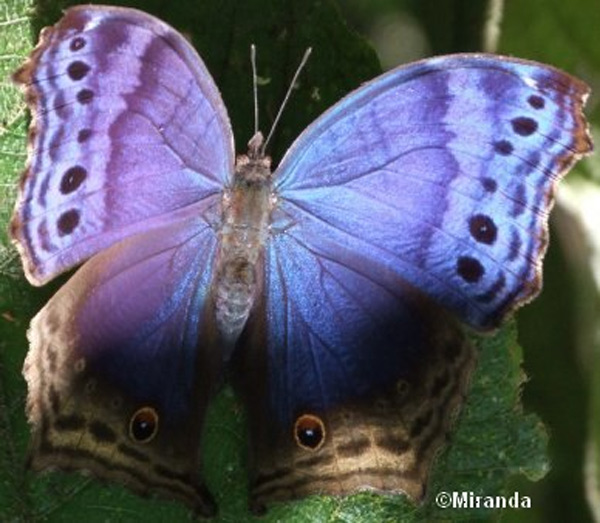
The home of more than 100 animals, 348 species of birds, 220 butterflies, but the Bwindi national park is best known as the home of mountain monkeys, chimpanzees and giant butterflies.
In 1932, the area was not established as a national park, the north of the forest was established as a Crow forest reserve and the south was Kayonza forest reserve . Both reserves have an area of 207 square kilometers. In 1942, two protected areas were linked to expand Crown prohibition area to 298 km. In 1964, the forbidden forest was renamed Crowm Forest Reserve with the function of preserving wildlife and especially mountain gorillas. By 1966, the reserve was increased to nearly 321 km.

In 1991, along with the Mgahinga Gorilla sanctuary and the Rwenzori sanctuary, the Crowm forbidden forest reserve was converted into a national park with an area of over 330 km2. The Ugandan government announced the establishment of a national park to protect the habitat for plants here and create a growth environment for animals, birds and amphibians. Despite many benefits, the establishment of the national park also has a great impact on the lives of Batwa dwarfs , who have been inhabiting this area for centuries. Because of the establishment of a national park, Batwa dwarfs were forced to leave the land where their father had lived for generations, besides that they were no longer allowed to plant and hunt in this area so that Their lives are pushed into difficulties.

In 1993, the national park started tourist activities and quickly became a tourist attraction in Uganda. In 1999, 14 foreign tourists visiting Bwindi National Park were abducted, many of whom were tortured, of which six were killed. After this event, the number of tourists visiting the garden fell sharply, visitors no longer dared to come here to visit tourism because they were too terrified. The Ugandan government is also forced to close the national park for several months to consolidate and tighten security.

Not only beautiful natural scenery, it is a suitable environment for many wild animals and hundreds of birds. Bwindi banned national park also has a very special geological layer with schist, quartz and granite. The abundance of tree species and the appropriate distribution of forests contribute to regulating the water basin in the national park.

National Park prohibits Bwindi from being recognized by Unesco under criteria (vii), (x)
Criterion (vii): Bwindi national park is an important place not because of the natural landscape here but because it is an interesting natural phenomenon of the world.
Criterion (x): Bwindi banned national park is a habitat and habitat for more than 100 mammals, 348 bird species, 220 butterfly species, 27 amphibian species and a few species listed in the animal list. rare. Flora in Bwindi forbidden forest is also extremely rich with a list of more than 1000 species of flowering plants including 163 species of plants, 104 species of ferns. The northern area is a low forest area with many precious timber species, of which 2 species have been internationally listed as potential endangered species. In the list of more than 100 species of animals residing in the garden, there are rare and precious species such as chimpanzees, Colobus monkeys, mountain gorillas, hornbills, Turaco birds.
- Yor-Don National Park calls for help
- Te Wahipounamu, southwestern New Zealand national parks
- Þingvellir National Park (Thingvellir)
- Rhino in Cat Tien National Park is under threat
- Detecting toad, mint banana in Xuan Son National Park
- Discover new lizards in Peru National Park
- Managing and protecting Bai Tu Long National Park
- Discover the village over 1000 years old in the US national park
- The stunning scenery of Plitvice National Park, Croatia
- The government allowed the expansion of Bach Ma National Park
- Follow the foot of the bull - Cycle 1: Traces between the forest
- Forest restoration solution in Cat Ba National Park
 Suzhou classic bonsai garden - China
Suzhou classic bonsai garden - China Chau Nguyen Dynasty
Chau Nguyen Dynasty Thai Son Mountain - World Wonder
Thai Son Mountain - World Wonder Ancient villages of Shirakawa-go and Gokayama
Ancient villages of Shirakawa-go and Gokayama Four new species appear as 'hybrids' of extraterrestrial creatures
Four new species appear as 'hybrids' of extraterrestrial creatures  Strange species in Southeast Asia becomes the first marine fish species 'extinct due to humans'
Strange species in Southeast Asia becomes the first marine fish species 'extinct due to humans'  Ancient humans may still live on Indonesia's Flores island
Ancient humans may still live on Indonesia's Flores island  The 'dragon' species that was thought to only exist in myths is one of the rarest on the planet.
The 'dragon' species that was thought to only exist in myths is one of the rarest on the planet.  How many animals have ever existed on Earth?
How many animals have ever existed on Earth?  Treasure of Southeast Asia: Rare animal species found in only 9 countries in the world, Vietnam just received good news!
Treasure of Southeast Asia: Rare animal species found in only 9 countries in the world, Vietnam just received good news! 